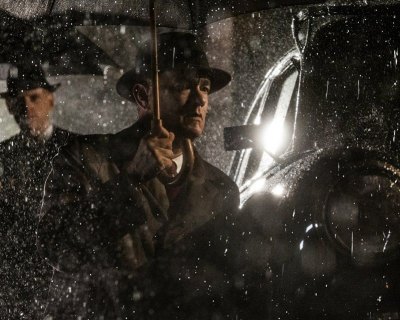Bridge of Spies: A Cold War thriller

The movie tells the story of James B. Donovan (portrayed by Tom Hanks), called upon to negotiate the exchange of Soviet spy Rudolf Abel for an American captured by the Soviets, Francis Gary Powers.
Here are the key players. The trailer is below.
Rudolf Abel (portrayed by Mark Rylance): Abel, born in 1903, came to the United States in 1948, recounts the online site for Encyclopedia Britannica. He gave his name as Emil R. Goldfus, settled in Brooklyn and worked as an artist and photographer.
But he also was the resident director for Soviet espionage in the United States and gathered information on the United Nations and military installations. Abel spoke several languages, including Russian, English, Yiddish, Polish and German, according to the online website for the Spy Museum.
He was caught in 1957 after another Soviet spy defected and turned him in. The FBI describes Abel’s residence as containing “shortwave radios, cipher pads, cameras and film for producing microdots, a hollow shaving brush, cuff links, and numerous other ‘trick’ containers.”
Abel died in Moscow in 1971.
James B. Donovan (portrayed by Hanks): Donovan, born in 1916, was a graduate of Fordham University and Harvard Law School, according to the James B. Donovan website. His credentials were impressive: commander in the Navy during World War II, general counsel of the Office of Strategic Services (a forerunner of the CIA) and associate prosecutor at the principal Nuremberg trial of Nazi war criminals.
It sounds as though several periods of his life could be the focus of a movie. But Spielberg's film focuses on Donovan's role as defense counsel for Abel and his work negotiating an exchange to free Powers. Later, he wrote a book about his experience, Strangers on a Bridge (Scribner, reissued edition; 2015).
Donovan died in 1970.
Francis Gary Powers (portrayed by Austin Stowell): Powers, born in 1929, piloted the U-2, a high-altitude plane that flew at a ceiling of 70,000 feet, according to the U.S. State Department. It was initially thought that the U-2 would be undetected by radar. Later, officials learned they were wrong about that -- the Soviets did pick up the flights on radar. But “as long as there was no definitive proof connecting the flights to the United States there was no advantage for the Soviets to raise the issue publicly lest it draw attention to the Soviet inability to shoot down the offending flights,” the State Department’s website explains.
On May 1, 1960, Powers, an Air Force pilot, took off on a flight that involved transgressing 2,900 miles of Soviet airspace. Soviet fighter jets shot his plane down. After parachuting to the ground, Powers was captured by the KGB, the Soviet intelligence agency.
He was convicted and sentenced to three years in prison and seven years of hard labor. In 1962, Powers and an American student were traded for Abel.
Later in life, Powers piloted a helicopter for a Los Angeles television station. He died in a helicopter crash in 1977. While criticized during his lifetime, Powers was posthumously awarded the Silver Star from the Air Force in 2012. (Read The New York Times story.)
The Powers incident did not spell the end for the U-2. It continued to be used and in 1962 flew missions confirming the presence of Soviet ballistic missiles in Cuba. (Read more about the U-2 on the Royal Air Force Museum’s National Cold War Exhibit online.)
Sources:
- Associated Press: Famed Lawyer for Spies Dead (1970).
- CIA online: Strangers on a Bridge by James B. Donovan, Book review by M. C. Miskovsky.
- Encyclopedia Britannica: Rudolf Abel.
- FBI online: Rudolf Ivanovich Abel (Hollow Nickel Case).
- The New York Times: Powers, U-2 Pilot Captured by Soviets, Awarded Silver Star (2012).
- Royal Air Force: National Cold War Exhibit.
- The Spy Museum: Rudolf Abel.
- U.S. Department of State, Office of the Historian: U-2 Overflights and the Capture of Francis Gary Powers, 1960.
- Website: James B. Donovan—A legacy of Ideals and Action, a website about Donovan.
Four phrases associated with the Cold War
If you would like to comment, give us a shout, or like us on Facebook and tell us what you think.

